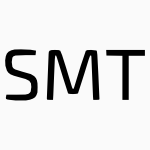131 papers:
 DATE-2015-CastrillonTSSJA #manycore #programming #question
DATE-2015-CastrillonTSSJA #manycore #programming #question- Multi/many-core programming: where are we standing? (JC, LT, LS, WS, BHHJ, MAM, AP, RJ, VR, RL), pp. 1708–1717.
 DATE-2015-Rabaey #intranet
DATE-2015-Rabaey #intranet- The human intranet: where swarms and humans meet (JMR), pp. 637–640.
 SANER-2015-NagyMC #approach #concept #query #sql
SANER-2015-NagyMC #approach #concept #query #sql- Where was this SQL query executed? a static concept location approach (CN, LM, AC), pp. 580–584.
 HIMI-IKC-2015-GotzeB #comparison #what
HIMI-IKC-2015-GotzeB #comparison #what- Urban Driving: Where to Present What Types of Information — Comparison of Head-Down and Head-Up Displays (MG, KB), pp. 190–200.
 RecSys-2015-Abel #recommendation
RecSys-2015-Abel #recommendation- We Know Where You Should Work Next Summer: Job Recommendations (FA), p. 230.
 RecSys-2015-HuD #machine learning #recommendation #scalability
RecSys-2015-HuD #machine learning #recommendation #scalability- Scalable Recommender Systems: Where Machine Learning Meets Search (SYDH, JD), pp. 365–366.
 SIGIR-2015-KiselevaMBDKEKT #optimisation
SIGIR-2015-KiselevaMBDKEKT #optimisation- Where to Go on Your Next Trip?: Optimizing Travel Destinations Based on User Preferences (JK, MJIM, LB, CD, IK, MSE, JK, AT, DH), pp. 1097–1100.
 Onward-2015-LorenzR #in the cloud
Onward-2015-LorenzR #in the cloud- Separation of powers in the cloud: where applications and users become peers (DHL, BR), pp. 76–89.
 VLDB-2014-ZhangTC
VLDB-2014-ZhangTC- Where To: Crowd-Aided Path Selection (CJZ, YT, LC), pp. 2005–2016.
 CSEET-2014-RongZS #case study #education #experience #matter #process
CSEET-2014-RongZS #case study #education #experience #matter #process- Where does experience matter in software process education? An experience report (GR, HZ, DS), pp. 129–138.
 MSR-2014-GuoLM #exclamation #question
MSR-2014-GuoLM #exclamation #question- Oops! where did that code snippet come from? (LG, JLL, GM), pp. 52–61.
 HCI-AS-2014-LouLP #distance #game studies #how
HCI-AS-2014-LouLP #distance #game studies #how- Distance Effect: Where You Stand Determines How Promptly You Interact with Game (XL, AXL, RP), pp. 614–621.
 HCI-AS-2014-ZhouXDC #future of #interactive #interface #mobile #past present future
HCI-AS-2014-ZhouXDC #future of #interactive #interface #mobile #past present future- Where Is Mobile Projection Interaction Going? The Past, Present and Future of the Mobile Projected Interface (YZ, TX, BD, RC), pp. 189–198.
 HILT-2014-Anderson #ada
HILT-2014-Anderson #ada- From Ada 9x to spaceport America: going where no one has gone before (CA), pp. 1–2.
 CIKM-2014-QuattroneNKT #what
CIKM-2014-QuattroneNKT #what- Tell Me What You Want and I Will Tell Others Where You Have Been (AQ, EN, LK, ET), pp. 1783–1786.
 ICPR-2014-CabreraMS #bias
ICPR-2014-CabreraMS #bias- Systematic Labeling Bias: De-biasing Where Everyone is Wrong (GFC, CJM, JS), pp. 4417–4422.
 KMIS-2014-WitschelTL #automation #navigation #topic
KMIS-2014-WitschelTL #automation #navigation #topic- Where Did I(T) Put It? — A Holistic Solution to the Automatic Construction of Topic Trees for Navigation (HFW, BT, JL), pp. 194–202.
 RecSys-2014-LiuWW #what
RecSys-2014-LiuWW #what- Tell me where to go and what to do next, but do not bother me (HL, GW, GW), pp. 375–376.
 SIGIR-2014-KumarJF #detection #twitter #using
SIGIR-2014-KumarJF #detection #twitter #using- Where not to go?: detecting road hazards using twitter (AK, MJ, YF), pp. 1223–1226.
 SMT-2014-Barrett #named #question #smt
SMT-2014-Barrett #named #question #smt- SMT: Where do we go from here? (CB), p. 1.
 HT-2013-RoutBPC #approach #classification #social
HT-2013-RoutBPC #approach #classification #social- Where’s @wally?: a classification approach to geolocating users based on their social ties (DPR, KB, DPP, TC), pp. 11–20.
 SIGMOD-2013-SayersSKGCH
SIGMOD-2013-SayersSKGCH- The farm: where pig scripts are bred and raised (CPS, AS, GK, AGG, DTC, MH), pp. 1025–1028.
 ESOP-2013-FilliatreP #named #proving #source code #why
ESOP-2013-FilliatreP #named #proving #source code #why- Why3 — Where Programs Meet Provers (JCF, AP), pp. 125–128.
 CHI-2013-WieseSB #mobile #named
CHI-2013-WieseSB #mobile #named- Phoneprioception: enabling mobile phones to infer where they are kept (JW, TSS, AJBB), pp. 2157–2166.
 HIMI-HSM-2013-CastronovoMM #interface #what
HIMI-HSM-2013-CastronovoMM #interface #what- What, Where, and When? Intelligent Presentation Management for Automotive Human Machine Interfaces and Its Application (SC, AM, CAM), pp. 460–469.
 CIKM-2013-BrilhanteMNPR
CIKM-2013-BrilhanteMNPR- Where shall we go today?: planning touristic tours with tripbuilder (IRB, JAFdM, FMN, RP, CR), pp. 757–762.
 CIKM-2013-KamathC #learning #predict #what
CIKM-2013-KamathC #learning #predict #what- Spatio-temporal meme prediction: learning what hashtags will be popular where (KYK, JC), pp. 1341–1350.
 KDD-2013-YuanCMSM #topic #twitter #what
KDD-2013-YuanCMSM #topic #twitter #what- Who, where, when and what: discover spatio-temporal topics for twitter users (QY, GC, ZM, AS, NMT), pp. 605–613.
 ESEC-FSE-2013-DubinskyFG #logic #question
ESEC-FSE-2013-DubinskyFG #logic #question- Where is the business logic? (YD, YAF, MG), pp. 667–670.
 FASE-2012-BradfieldS #calculus #qvt #recursion #μ-calculus
FASE-2012-BradfieldS #calculus #qvt #recursion #μ-calculus- Recursive Checkonly QVT-R Transformations with General when and where Clauses via the Modal μ Calculus (JCB, PS), pp. 194–208.
 MSR-2012-BirdN #development #distributed #open source #scalability #what
MSR-2012-BirdN #development #distributed #open source #scalability #what- Who? Where? What? Examining distributed development in two large open source projects (CB, NN), pp. 237–246.
 CIKM-2012-CosciaR #how #using #web
CIKM-2012-CosciaR #how #using #web- Knowing where and how criminal organizations operate using web content (MC, VR), pp. 1412–1421.
 CIKM-2012-YueJHH #analysis #collaboration #query #web
CIKM-2012-YueJHH #analysis #collaboration #query #web- Where do the query terms come from?: an analysis of query reformulation in collaborative web search (ZY, JJ, SH, DH), pp. 2595–2598.
 SIGIR-2012-LeiCCIH #layout #retrieval #scalability
SIGIR-2012-LeiCCIH #layout #retrieval #scalability- Where is who: large-scale photo retrieval by facial attributes and canvas layout (YHL, YYC, BCC, LI, WHH), pp. 701–710.
 ICSE-2012-InoueSXM #open source
ICSE-2012-InoueSXM #open source- Where does this code come from and where does it go? — Integrated code history tracker for open source systems (KI, YS, PX, YM), pp. 331–341.
 ICSE-2012-ZhouZL #debugging #information retrieval #locality
ICSE-2012-ZhouZL #debugging #information retrieval #locality- Where should the bugs be fixed? More accurate information retrieval-based bug localization based on bug reports (JZ, HZ, DL), pp. 14–24.
 CSL-2012-Lynce #named #satisfiability
CSL-2012-Lynce #named #satisfiability- Satisfiability: where Theory meets Practice (Invited Talk) (IL), pp. 12–13.
 LICS-2012-ElberfeldGT #first-order #higher-order #logic #monad
LICS-2012-ElberfeldGT #first-order #higher-order #logic #monad- Where First-Order and Monadic Second-Order Logic Coincide (ME, MG, TT), pp. 265–274.
 PODS-2011-Muthukrishnan #data type
PODS-2011-Muthukrishnan #data type- Theory of data stream computing: where to go (SM), pp. 317–319.
 VLDB-2011-KadambiCCLRSTG #question
VLDB-2011-KadambiCCLRSTG #question- Where in the World is My Data? (SK, JC, BFC, DL, RR, AS, ET, HGM), pp. 1040–1050.
 FASE-2011-Przybylek #aspect-oriented #composition
FASE-2011-Przybylek #aspect-oriented #composition- Where the Truth Lies: AOP and Its Impact on Software Modularity (AP), pp. 447–461.
 CHI-2011-PanCHMHMC
CHI-2011-PanCHMHMC- Now where was I?: physiologically-triggered bookmarking (MKXJP, GJSC, GHH, AJM, TWH, KEM, EAC), pp. 363–372.
 ICEIS-v2-2011-GonzalezML #design
ICEIS-v2-2011-GonzalezML #design- A Model for Designing Non Cooperative Supply Chain Where Logistics Service Providers Take Part (EDRSG, GRM, HPLL), pp. 409–417.
 CIKM-2011-LiSVEL #twitter
CIKM-2011-LiSVEL #twitter- The where in the tweet (WL, PS, APdV, CE, ML), pp. 2473–2476.
 ECSA-2010-Kruchten #architecture #question
ECSA-2010-Kruchten #architecture #question- Where Did All This Good Architectural Knowledge Go? (PK), pp. 5–6.
 ICSM-2010-BurgstallerE #comprehension #requirements
ICSM-2010-BurgstallerE #comprehension #requirements- Understanding where requirements are implemented (BB, AE), pp. 1–5.
 PEPM-2010-Augustsson #question
PEPM-2010-Augustsson #question- O, partial evaluator, where art thou? (LA), pp. 1–2.
 ICALP-v2-2010-CollinsCGL
ICALP-v2-2010-CollinsCGL- Tell Me Where I Am So I Can Meet You Sooner (AC, JC, LG, AL), pp. 502–514.
 CHI-2010-ForlizziBS #collaboration #design #interactive #navigation
CHI-2010-ForlizziBS #collaboration #design #interactive #navigation- Where should i turn: moving from individual to collaborative navigation strategies to inform the interaction design of future navigation systems (JF, WCB, TS), pp. 1261–1270.
 CHI-2010-HornofZH #multimodal
CHI-2010-HornofZH #multimodal- Knowing where and when to look in a time-critical multimodal dual task (AJH, YZ, TH), pp. 2103–2112.
 CHI-2010-KalnikaiteSWK #comprehension #how #memory management
CHI-2010-KalnikaiteSWK #comprehension #how #memory management- Now let me see where i was: understanding how lifelogs mediate memory (VK, AS, SW, DSK), pp. 2045–2054.
 CHI-2010-PielotKB
CHI-2010-PielotKB- Where is my team: supporting situation awareness with tactile displays (MP, OK, SB), pp. 1705–1714.
 CHI-2010-SmythKMT #mobile
CHI-2010-SmythKMT #mobile- Where there’s a will there’s a way: mobile media sharing in urban india (TNS, SK, IM, KT), pp. 753–762.
 CHI-2010-WongG
CHI-2010-WongG- Where are you pointing?: the accuracy of deictic pointing in CVEs (NW, CG), pp. 1029–1038.
 CIKM-2010-ChengCL #approach #twitter
CIKM-2010-ChengCL #approach #twitter- You are where you tweet: a content-based approach to geo-locating twitter users (ZC, JC, KL), pp. 759–768.
 SIGIR-2010-FernandezPLB #approach #clustering
SIGIR-2010-FernandezPLB #approach #clustering- Where to start filtering redundancy?: a cluster-based approach (RTF, JP, DEL, AB), pp. 735–736.
 SAC-2010-YasarMPLCB #information management #interactive #network #people #scalability #social
SAC-2010-YasarMPLCB #information management #interactive #network #people #scalability #social- Where people and cars meet: social interactions to improve information sharing in large scale vehicular networks (AUHY, NM, DP, KL, KC, YB), pp. 1188–1194.
 ICSE-2010-UbayashiNT #architecture #contract #design #named
ICSE-2010-UbayashiNT #architecture #contract #design #named- Archface: a contract place where architectural design and code meet together (NU, JN, TT), pp. 75–84.
 SAT-2010-Naveh #constraints #difference
SAT-2010-Naveh #constraints #difference- The Big Deal: Applying Constraint Satisfaction Technologies Where It Makes the Difference (YN), pp. 1–7.
 CHI-2009-HarrisonLSH #performance #smarttech #visual notation
CHI-2009-HarrisonLSH #performance #smarttech #visual notation- Where to locate wearable displays?: reaction time performance of visual alerts from tip to toe (CH, BYL, AS, SEH), pp. 941–944.
 CHI-2009-NylanderLB #internet #people #why
CHI-2009-NylanderLB #internet #people #why- At home and with computer access: why and where people use cell phones to access the internet (SN, TL, AB), pp. 1639–1642.
 CAiSE-2009-Wiederhold #how #named #question #tutorial
CAiSE-2009-Wiederhold #how #named #question #tutorial- Tutorial: How to Value Software in a Business, and Where Might the Value Go? (GW), pp. 9–10.
 ECIR-2009-UdupaSBB #information retrieval #mining #query #quote
ECIR-2009-UdupaSBB #information retrieval #mining #query #quote- “They Are Out There, If You Know Where to Look”: Mining Transliterations of OOV Query Terms for Cross-Language Information Retrieval (RU, KS, AB, AB), pp. 437–448.
 KDD-2009-MonrealePTG #mining #named #predict
KDD-2009-MonrealePTG #mining #named #predict- WhereNext: a location predictor on trajectory pattern mining (AM, FP, RT, FG), pp. 637–646.
 SIGIR-2009-ArampatzisKR #optimisation #using
SIGIR-2009-ArampatzisKR #optimisation #using- Where to stop reading a ranked list?: threshold optimization using truncated score distributions (AA, JK, SR), pp. 524–531.
 ECMDA-FA-2009-Trew #embedded #question
ECMDA-FA-2009-Trew #embedded #question- Creating Embedded Platforms with MDA: Where’s the Sweet Spot? (TT), p. 1.
 SAC-2009-IorioRVZ #community #web
SAC-2009-IorioRVZ #community #web- Where are your manners?: Sharing best community practices in the web 2.0 (ADI, DR, FV, SZ), pp. 681–687.
 DATE-2008-PomeranzR #detection #fault #logic
DATE-2008-PomeranzR #detection #fault #logic- A Bridging Fault Model Where Undetectable Faults Imply Logic Redundancy (IP, SMR), pp. 1166–1171.
 HT-2008-FarzanB #navigation #research #scalability #social
HT-2008-FarzanB #navigation #research #scalability #social- Where did the researchers go?: supporting social navigation at a large academic (RF, PB), pp. 203–212.
 CSEET-2008-Cowling #question #student
CSEET-2008-Cowling #question #student- Where Do Students Look for Information? (AJC), pp. 207–214.
 CSCW-2008-DiamantFL #performance
CSCW-2008-DiamantFL #performance- Where did we turn wrong?: unpacking the effect of culture and technology on attributions of team performance (EID, SRF, FlL), pp. 383–392.
 SIGAda-2008-GiccaB #question
SIGAda-2008-GiccaB #question- GNAT BoF: where would you like to see GNAT go? (GG, BMB), pp. 139–140.
 ICEIS-DISI-2008-PennesiHRWS #what #why
ICEIS-DISI-2008-PennesiHRWS #what #why- WWW++ — Adding Why to What, When and Where (PP, MH, CR, CYW, SS), pp. 304–309.
 ECMDA-FA-2008-MohagheghiD #bibliography #case study #experience #industrial #proving
ECMDA-FA-2008-MohagheghiD #bibliography #case study #experience #industrial #proving- Where Is the Proof? — A Review of Experiences from Applying MDE in Industry (PM, VD), pp. 432–443.
 PPoPP-2008-Mellor-Crummey #question #thread
PPoPP-2008-Mellor-Crummey #question #thread- Where will all the threads come from? (JMMC), pp. 259–260.
 ITiCSE-2007-Kuyl #question
ITiCSE-2007-Kuyl #question- Where have all the computer scientists gone? (CvdK), p. 2.
 ESOP-2007-MantelR #classification #security #what
ESOP-2007-MantelR #classification #security #what- Controlling the What and Where of Declassification in Language-Based Security (HM, AR), pp. 141–156.
 SIGAda-2007-Dewar07a #named #question
SIGAda-2007-Dewar07a #named #question- Birds-of-a-feather: where would you like to see GNAT go? (RD), pp. 97–98.
 SIGIR-2007-KampsKL #documentation #question #xml
SIGIR-2007-KampsKL #documentation #question #xml- Where to start reading a textual XML document? (JK, MK, ML), pp. 723–724.
 ISSTA-2007-TzorefUY #automation #concurrent #debugging
ISSTA-2007-TzorefUY #automation #concurrent #debugging- Instrumenting where it hurts: an automatic concurrent debugging technique (RT, SU, EYT), pp. 27–38.
 DAC-2006-RawatCKSGZS #named #proving #question
DAC-2006-RawatCKSGZS #named #proving #question- DFM: where’s the proof of value? (SR, RC, AK, JS, MG, NZ, AS), pp. 1061–1062.
 MSR-2006-CanforaC06a #debugging #question
MSR-2006-CanforaC06a #debugging #question- Where is bug resolution knowledge stored? (GC, LC), pp. 183–184.
 CSCW-2006-AokiSPTWY #multi
CSCW-2006-AokiSPTWY #multi- Where’s the “party” in “multi-party”?: analyzing the structure of small-group sociable talk (PMA, MHS, LDP, JDT, AW, WY), pp. 393–402.
 RE-2005-RegevW #requirements
RE-2005-RegevW #requirements- Where do Goals Come from: the Underlying Principles of Goal-Oriented Requirements Engineering (GR, AW), pp. 353–362.
 SAC-2005-Atterer #tool support #web
SAC-2005-Atterer #tool support #web- Where web engineering tool support ends: building usable websites (RA), pp. 1684–1688.
 ICSE-2005-JacksonZ #question
ICSE-2005-JacksonZ #question- Where do you go when you’re through the turnstile? (MJ, PZ), p. 44.
 DAC-2004-Rodman #question
DAC-2004-Rodman #question- Forest vs. trees: where’s the slack? (PKR), p. 267.
 DATE-v1-2004-SciutoMRSGFS #question
DATE-v1-2004-SciutoMRSGFS #question- SystemC and SystemVerilog: Where do They Fit? Where are They Going? (DS, GM, WR, SS, FG, PF, JS), pp. 122–129.
 VLDB-2004-KrishnamurthyKN #performance #query #question
VLDB-2004-KrishnamurthyKN #performance #query #question- Efficient XML-to-SQL Query Translation: Where to Add the Intelligence? (RK, RK, JFN), pp. 144–155.
 VLDB-2004-OConnellWBC #database #question
VLDB-2004-OConnellWBC #database #question- Where is Business Intelligence taking today’s Database Systems? (WO, AW, RB, SC), pp. 1237–1238.
 CSCW-2004-JuINW #design #physics
CSCW-2004-JuINW #design #physics- Where the wild things work: capturing shared physical design workspaces (WJ, AI, LN, TW), pp. 533–541.
 CSCW-2004-TwidaleR #collaboration
CSCW-2004-TwidaleR #collaboration- Where am I and who am I?: issues in collaborative technical help (MT, KR), pp. 378–387.
 SIGIR-2004-AmitayHSS #named #web
SIGIR-2004-AmitayHSS #named #web- Web-a-where: geotagging web content (EA, NH, RS, AS), pp. 273–280.
 SIGIR-2004-LarsonF #information retrieval #what
SIGIR-2004-LarsonF #information retrieval #what- Geographic information retrieval (GIR): searching where and what (RRL, PF), p. 600.
 CHI-2003-FlinthamBAHCGTAR #artificial reality #case study #experience #game studies #mobile #online
CHI-2003-FlinthamBAHCGTAR #artificial reality #case study #experience #game studies #mobile #online- Where on-line meets on the streets: experiences with mobile mixed reality games (MF, SB, RA, TH, AC, CG, NT, MA, JRF), pp. 569–576.
 ICEIS-v1-2003-EdlundFKK #question
ICEIS-v1-2003-EdlundFKK #question- Extending Groupware for OLAP: Where Did My Time Go? (SE, DAF, VK, SK), pp. 47–54.
 ICSE-2003-Szyperski #component #how #question #what
ICSE-2003-Szyperski #component #how #question #what- Component Technology — What, Where, and How? (CAS), pp. 684–693.
 IWPC-2002-JinCD #taxonomy
IWPC-2002-JinCD #taxonomy- Where’s the Schema? A Taxonomy of Patterns for Software Exchange (DJ, JRC, TRD), pp. 65–74.
 CHI-2002-Ehret #learning #user interface #visual notation
CHI-2002-Ehret #learning #user interface #visual notation- Learning where to look: location learning in graphical user interfaces (BDE), pp. 211–218.
 CHI-2002-KlemmerTPLL #design #web
CHI-2002-KlemmerTPLL #design #web- Where do web sites come from?: capturing and interacting with design history (SRK, MT, EPG, RL, JAL), pp. 1–8.
 SAC-2002-BinderR #java #mobile #question #using
SAC-2002-BinderR #java #mobile #question #using- Secure mobile agent systems using Java: where are we heading? (WB, VR), pp. 115–119.
 FLOPS-2001-Sato #learning #logic programming #source code
FLOPS-2001-Sato #learning #logic programming #source code- Parameterized Logic Programs where Computing Meets Learning (TS), pp. 40–60.
 RE-2001-GauseR #question
RE-2001-GauseR #question- Where Are We on the “Fend off the Alligators — Drain the Swamp” Continuum? (DCG, SR), p. 266.
 ICRE-2000-Gause #question #requirements #what
ICRE-2000-Gause #question #requirements #what- Requirements Engineering: What Have We Accomplished? Where Are We Now? Where Are We Going? (DCG), pp. 195–196.
 VLDB-1999-AilamakiDHW #question
VLDB-1999-AilamakiDHW #question- DBMSs on a Modern Processor: Where Does Time Go? (AA, DJD, MDH, DAW), pp. 266–277.
 FM-v1-1999-Rushby #formal method #question
FM-v1-1999-Rushby #formal method #question- Mechanized Formal Methods: Where Next? (JMR), pp. 48–51.
 AGTIVE-1999-Levialdi #question #visual notation
AGTIVE-1999-Levialdi #question #visual notation- Visual Languages: Where Do We Stand? (SL), pp. 145–164.
 PODS-1998-Klavans #database #information management #library
PODS-1998-Klavans #database #information management #library- Data Bases in Digital Libraries: Where Computer Science and Information Management Meet (JK), pp. 224–226.
 HCI-SEC-1997-SingerW #named #question
HCI-SEC-1997-SingerW #named #question- Presence: Where Are We Now? (MJS, BGW), pp. 885–888.
 ACIR-1997-MateevMS #dependence #how
ACIR-1997-MateevMS #dependence #how- Where the Linked Dependence Assumption Fails and How to Move Beyond It (BM, EM, PS).
 PLILP-1997-Thompson #approach #education #functional #problem #programming
PLILP-1997-Thompson #approach #education #functional #problem #programming- Where Do I Begin? A Problem Solving Approach in teaching Functional Programming (SJT), pp. 323–334.
 ICSE-1997-Lehman #modelling #process
ICSE-1997-Lehman #modelling #process- Process Modelling — Where Next (MML), pp. 549–552.
 SOSP-1997-AndersonBDGHLSVWW #profiling #question
SOSP-1997-AndersonBDGHLSVWW #profiling #question- Continuous Profiling: Where Have All the Cycles Gone? (JAMA, LMB, JD, SG, MRH, STL, RLS, MTV, CAW, WEW), pp. 1–14.
 AdaEurope-1996-GellerichKP #goto #question
AdaEurope-1996-GellerichKP #goto #question- Where Does GOTO Go to? (WG, MK, EP), pp. 385–395.
 KR-1996-Fikes #named #ontology #question #research #what
KR-1996-Fikes #named #ontology #question #research #what- Ontologies: What Are They, and Where’s The Research? (RF), pp. 652–653.
 KR-1996-Mark #named #ontology #question #research #what
KR-1996-Mark #named #ontology #question #research #what- Ontologies: What Are They, and Where’s The Research? (WSM), pp. 654–655.
 ICRE-1996-Cheng #formal method #how #question #requirements
ICRE-1996-Cheng #formal method #how #question #requirements- Where and How do Formal Methods Fit in Requirements Engineering? (BHCC), pp. 154–156.
 OOPSLA-1995-DayGLM #morphism #parametricity #polymorphism #type system
OOPSLA-1995-DayGLM #morphism #parametricity #polymorphism #type system- Subtypes vs. Where Clauses: Constraining Parametric Polymorphism (MD, RG, BL, ACM), pp. 156–168.
 HT-ECHT-1994-KaplanM #design #ontology
HT-ECHT-1994-KaplanM #design #ontology- Where No Mind Has Gone Before: Ontological Design for Virtual Spaces (NK, SM), pp. 206–216.
 ASPLOS-1994-ChandraLR #message passing #question #source code
ASPLOS-1994-ChandraLR #message passing #question #source code- Where is Time Spent in Message-Passing and Shared-Memory Programs? (SC, JRL, AR), pp. 61–73.
 ASPLOS-1994-KaramchetiC #question
ASPLOS-1994-KaramchetiC #question- Software Overhead in Messaging Layers: Where Does the Time Go? (VK, AAC), pp. 51–60.
 INTERCHI-1993-BerlinJOPW #design #memory management
INTERCHI-1993-BerlinJOPW #design #memory management- Where did you put it? Issues in the design and use of a group memory (LMB, RJ, VLO, AP, CW), pp. 23–30.
 ICSE-1993-DrakeXTZ #analysis #approach #case study
ICSE-1993-DrakeXTZ #analysis #approach #case study- Approach and Case Study of Requirement Analysis Where End Users Take an Active Role (JMD, WWX, WTT, IAZ), pp. 177–186.
 HT-ECHT-1992-LandowK #hypermedia #independence #web
HT-ECHT-1992-LandowK #hypermedia #independence #web- Where’s the Hypertext? The Dickens Web as a System-Independent Hypertext (GPL, PK), pp. 149–160.
 KR-1992-Reiter #reasoning #research #what
KR-1992-Reiter #reasoning #research #what- Twelve Years of Nonmonotonic Reasoning Research: Where (and What) Is the Beef (RR), p. 789.
 CAiSE-1989-Bergkvist #development #exclamation #idea
CAiSE-1989-Bergkvist #development #exclamation #idea- The mistakes — where systems development doesn’t support business idea! (TB).
 POPL-1988-WilliamsW #question
POPL-1988-WilliamsW #question- Sacrificing Simplicity for Convenience: Where Do You Draw the Line? (JHW, ELW), pp. 169–179.
 DAC-1987-Hines
DAC-1987-Hines- Where VHDL Fits Within the CAD Environment (JH), pp. 491–494.
 HCI-CE-1987-Glenn #human-computer #interactive #question #speech
HCI-CE-1987-Glenn #human-computer #interactive #question #speech- Where Does Speech Technology Fit in Human-Computer Interaction? (JWG), pp. 431–438.
 SIGMOD-1983-Bernstein #database
SIGMOD-1983-Bernstein #database- Database Theory: Where Has It Been? Where Is It Going? (Abstract) (PAB), p. 2.
 SIGIR-1980-Montgomery #question
SIGIR-1980-Montgomery #question- Where Do We Go From Here? (CAM), pp. 370–385.
 DATE-2015-CastrillonTSSJA #manycore #programming #question
DATE-2015-CastrillonTSSJA #manycore #programming #question DATE-2015-Rabaey #intranet
DATE-2015-Rabaey #intranet SANER-2015-NagyMC #approach #concept #query #sql
SANER-2015-NagyMC #approach #concept #query #sql HIMI-IKC-2015-GotzeB #comparison #what
HIMI-IKC-2015-GotzeB #comparison #what RecSys-2015-Abel #recommendation
RecSys-2015-Abel #recommendation RecSys-2015-HuD #machine learning #recommendation #scalability
RecSys-2015-HuD #machine learning #recommendation #scalability SIGIR-2015-KiselevaMBDKEKT #optimisation
SIGIR-2015-KiselevaMBDKEKT #optimisation Onward-2015-LorenzR #in the cloud
Onward-2015-LorenzR #in the cloud VLDB-2014-ZhangTC
VLDB-2014-ZhangTC CSEET-2014-RongZS #case study #education #experience #matter #process
CSEET-2014-RongZS #case study #education #experience #matter #process MSR-2014-GuoLM #exclamation #question
MSR-2014-GuoLM #exclamation #question HCI-AS-2014-LouLP #distance #game studies #how
HCI-AS-2014-LouLP #distance #game studies #how HCI-AS-2014-ZhouXDC #future of #interactive #interface #mobile #past present future
HCI-AS-2014-ZhouXDC #future of #interactive #interface #mobile #past present future HILT-2014-Anderson #ada
HILT-2014-Anderson #ada CIKM-2014-QuattroneNKT #what
CIKM-2014-QuattroneNKT #what ICPR-2014-CabreraMS #bias
ICPR-2014-CabreraMS #bias KMIS-2014-WitschelTL #automation #navigation #topic
KMIS-2014-WitschelTL #automation #navigation #topic RecSys-2014-LiuWW #what
RecSys-2014-LiuWW #what SIGIR-2014-KumarJF #detection #twitter #using
SIGIR-2014-KumarJF #detection #twitter #using SMT-2014-Barrett #named #question #smt
SMT-2014-Barrett #named #question #smt HT-2013-RoutBPC #approach #classification #social
HT-2013-RoutBPC #approach #classification #social SIGMOD-2013-SayersSKGCH
SIGMOD-2013-SayersSKGCH ESOP-2013-FilliatreP #named #proving #source code #why
ESOP-2013-FilliatreP #named #proving #source code #why CHI-2013-WieseSB #mobile #named
CHI-2013-WieseSB #mobile #named HIMI-HSM-2013-CastronovoMM #interface #what
HIMI-HSM-2013-CastronovoMM #interface #what CIKM-2013-BrilhanteMNPR
CIKM-2013-BrilhanteMNPR CIKM-2013-KamathC #learning #predict #what
CIKM-2013-KamathC #learning #predict #what KDD-2013-YuanCMSM #topic #twitter #what
KDD-2013-YuanCMSM #topic #twitter #what ESEC-FSE-2013-DubinskyFG #logic #question
ESEC-FSE-2013-DubinskyFG #logic #question FASE-2012-BradfieldS #calculus #qvt #recursion #μ-calculus
FASE-2012-BradfieldS #calculus #qvt #recursion #μ-calculus MSR-2012-BirdN #development #distributed #open source #scalability #what
MSR-2012-BirdN #development #distributed #open source #scalability #what CIKM-2012-CosciaR #how #using #web
CIKM-2012-CosciaR #how #using #web CIKM-2012-YueJHH #analysis #collaboration #query #web
CIKM-2012-YueJHH #analysis #collaboration #query #web SIGIR-2012-LeiCCIH #layout #retrieval #scalability
SIGIR-2012-LeiCCIH #layout #retrieval #scalability ICSE-2012-InoueSXM #open source
ICSE-2012-InoueSXM #open source ICSE-2012-ZhouZL #debugging #information retrieval #locality
ICSE-2012-ZhouZL #debugging #information retrieval #locality CSL-2012-Lynce #named #satisfiability
CSL-2012-Lynce #named #satisfiability LICS-2012-ElberfeldGT #first-order #higher-order #logic #monad
LICS-2012-ElberfeldGT #first-order #higher-order #logic #monad PODS-2011-Muthukrishnan #data type
PODS-2011-Muthukrishnan #data type VLDB-2011-KadambiCCLRSTG #question
VLDB-2011-KadambiCCLRSTG #question FASE-2011-Przybylek #aspect-oriented #composition
FASE-2011-Przybylek #aspect-oriented #composition CHI-2011-PanCHMHMC
CHI-2011-PanCHMHMC ICEIS-v2-2011-GonzalezML #design
ICEIS-v2-2011-GonzalezML #design CIKM-2011-LiSVEL #twitter
CIKM-2011-LiSVEL #twitter ECSA-2010-Kruchten #architecture #question
ECSA-2010-Kruchten #architecture #question ICSM-2010-BurgstallerE #comprehension #requirements
ICSM-2010-BurgstallerE #comprehension #requirements PEPM-2010-Augustsson #question
PEPM-2010-Augustsson #question ICALP-v2-2010-CollinsCGL
ICALP-v2-2010-CollinsCGL CHI-2010-ForlizziBS #collaboration #design #interactive #navigation
CHI-2010-ForlizziBS #collaboration #design #interactive #navigation CHI-2010-HornofZH #multimodal
CHI-2010-HornofZH #multimodal CHI-2010-KalnikaiteSWK #comprehension #how #memory management
CHI-2010-KalnikaiteSWK #comprehension #how #memory management CHI-2010-PielotKB
CHI-2010-PielotKB CHI-2010-SmythKMT #mobile
CHI-2010-SmythKMT #mobile CHI-2010-WongG
CHI-2010-WongG CIKM-2010-ChengCL #approach #twitter
CIKM-2010-ChengCL #approach #twitter SIGIR-2010-FernandezPLB #approach #clustering
SIGIR-2010-FernandezPLB #approach #clustering SAC-2010-YasarMPLCB #information management #interactive #network #people #scalability #social
SAC-2010-YasarMPLCB #information management #interactive #network #people #scalability #social ICSE-2010-UbayashiNT #architecture #contract #design #named
ICSE-2010-UbayashiNT #architecture #contract #design #named SAT-2010-Naveh #constraints #difference
SAT-2010-Naveh #constraints #difference CHI-2009-HarrisonLSH #performance #smarttech #visual notation
CHI-2009-HarrisonLSH #performance #smarttech #visual notation CHI-2009-NylanderLB #internet #people #why
CHI-2009-NylanderLB #internet #people #why CAiSE-2009-Wiederhold #how #named #question #tutorial
CAiSE-2009-Wiederhold #how #named #question #tutorial ECIR-2009-UdupaSBB #information retrieval #mining #query #quote
ECIR-2009-UdupaSBB #information retrieval #mining #query #quote KDD-2009-MonrealePTG #mining #named #predict
KDD-2009-MonrealePTG #mining #named #predict SIGIR-2009-ArampatzisKR #optimisation #using
SIGIR-2009-ArampatzisKR #optimisation #using ECMDA-FA-2009-Trew #embedded #question
ECMDA-FA-2009-Trew #embedded #question SAC-2009-IorioRVZ #community #web
SAC-2009-IorioRVZ #community #web DATE-2008-PomeranzR #detection #fault #logic
DATE-2008-PomeranzR #detection #fault #logic HT-2008-FarzanB #navigation #research #scalability #social
HT-2008-FarzanB #navigation #research #scalability #social CSEET-2008-Cowling #question #student
CSEET-2008-Cowling #question #student CSCW-2008-DiamantFL #performance
CSCW-2008-DiamantFL #performance SIGAda-2008-GiccaB #question
SIGAda-2008-GiccaB #question ICEIS-DISI-2008-PennesiHRWS #what #why
ICEIS-DISI-2008-PennesiHRWS #what #why ECMDA-FA-2008-MohagheghiD #bibliography #case study #experience #industrial #proving
ECMDA-FA-2008-MohagheghiD #bibliography #case study #experience #industrial #proving PPoPP-2008-Mellor-Crummey #question #thread
PPoPP-2008-Mellor-Crummey #question #thread ITiCSE-2007-Kuyl #question
ITiCSE-2007-Kuyl #question ESOP-2007-MantelR #classification #security #what
ESOP-2007-MantelR #classification #security #what SIGAda-2007-Dewar07a #named #question
SIGAda-2007-Dewar07a #named #question SIGIR-2007-KampsKL #documentation #question #xml
SIGIR-2007-KampsKL #documentation #question #xml ISSTA-2007-TzorefUY #automation #concurrent #debugging
ISSTA-2007-TzorefUY #automation #concurrent #debugging DAC-2006-RawatCKSGZS #named #proving #question
DAC-2006-RawatCKSGZS #named #proving #question MSR-2006-CanforaC06a #debugging #question
MSR-2006-CanforaC06a #debugging #question CSCW-2006-AokiSPTWY #multi
CSCW-2006-AokiSPTWY #multi RE-2005-RegevW #requirements
RE-2005-RegevW #requirements SAC-2005-Atterer #tool support #web
SAC-2005-Atterer #tool support #web ICSE-2005-JacksonZ #question
ICSE-2005-JacksonZ #question DAC-2004-Rodman #question
DAC-2004-Rodman #question DATE-v1-2004-SciutoMRSGFS #question
DATE-v1-2004-SciutoMRSGFS #question VLDB-2004-KrishnamurthyKN #performance #query #question
VLDB-2004-KrishnamurthyKN #performance #query #question VLDB-2004-OConnellWBC #database #question
VLDB-2004-OConnellWBC #database #question CSCW-2004-JuINW #design #physics
CSCW-2004-JuINW #design #physics CSCW-2004-TwidaleR #collaboration
CSCW-2004-TwidaleR #collaboration SIGIR-2004-AmitayHSS #named #web
SIGIR-2004-AmitayHSS #named #web SIGIR-2004-LarsonF #information retrieval #what
SIGIR-2004-LarsonF #information retrieval #what CHI-2003-FlinthamBAHCGTAR #artificial reality #case study #experience #game studies #mobile #online
CHI-2003-FlinthamBAHCGTAR #artificial reality #case study #experience #game studies #mobile #online ICEIS-v1-2003-EdlundFKK #question
ICEIS-v1-2003-EdlundFKK #question ICSE-2003-Szyperski #component #how #question #what
ICSE-2003-Szyperski #component #how #question #what IWPC-2002-JinCD #taxonomy
IWPC-2002-JinCD #taxonomy CHI-2002-Ehret #learning #user interface #visual notation
CHI-2002-Ehret #learning #user interface #visual notation CHI-2002-KlemmerTPLL #design #web
CHI-2002-KlemmerTPLL #design #web SAC-2002-BinderR #java #mobile #question #using
SAC-2002-BinderR #java #mobile #question #using FLOPS-2001-Sato #learning #logic programming #source code
FLOPS-2001-Sato #learning #logic programming #source code RE-2001-GauseR #question
RE-2001-GauseR #question ICRE-2000-Gause #question #requirements #what
ICRE-2000-Gause #question #requirements #what VLDB-1999-AilamakiDHW #question
VLDB-1999-AilamakiDHW #question FM-v1-1999-Rushby #formal method #question
FM-v1-1999-Rushby #formal method #question AGTIVE-1999-Levialdi #question #visual notation
AGTIVE-1999-Levialdi #question #visual notation PODS-1998-Klavans #database #information management #library
PODS-1998-Klavans #database #information management #library HCI-SEC-1997-SingerW #named #question
HCI-SEC-1997-SingerW #named #question ACIR-1997-MateevMS #dependence #how
ACIR-1997-MateevMS #dependence #how PLILP-1997-Thompson #approach #education #functional #problem #programming
PLILP-1997-Thompson #approach #education #functional #problem #programming ICSE-1997-Lehman #modelling #process
ICSE-1997-Lehman #modelling #process SOSP-1997-AndersonBDGHLSVWW #profiling #question
SOSP-1997-AndersonBDGHLSVWW #profiling #question AdaEurope-1996-GellerichKP #goto #question
AdaEurope-1996-GellerichKP #goto #question KR-1996-Fikes #named #ontology #question #research #what
KR-1996-Fikes #named #ontology #question #research #what KR-1996-Mark #named #ontology #question #research #what
KR-1996-Mark #named #ontology #question #research #what ICRE-1996-Cheng #formal method #how #question #requirements
ICRE-1996-Cheng #formal method #how #question #requirements OOPSLA-1995-DayGLM #morphism #parametricity #polymorphism #type system
OOPSLA-1995-DayGLM #morphism #parametricity #polymorphism #type system HT-ECHT-1994-KaplanM #design #ontology
HT-ECHT-1994-KaplanM #design #ontology ASPLOS-1994-ChandraLR #message passing #question #source code
ASPLOS-1994-ChandraLR #message passing #question #source code ASPLOS-1994-KaramchetiC #question
ASPLOS-1994-KaramchetiC #question INTERCHI-1993-BerlinJOPW #design #memory management
INTERCHI-1993-BerlinJOPW #design #memory management ICSE-1993-DrakeXTZ #analysis #approach #case study
ICSE-1993-DrakeXTZ #analysis #approach #case study HT-ECHT-1992-LandowK #hypermedia #independence #web
HT-ECHT-1992-LandowK #hypermedia #independence #web KR-1992-Reiter #reasoning #research #what
KR-1992-Reiter #reasoning #research #what CAiSE-1989-Bergkvist #development #exclamation #idea
CAiSE-1989-Bergkvist #development #exclamation #idea POPL-1988-WilliamsW #question
POPL-1988-WilliamsW #question DAC-1987-Hines
DAC-1987-Hines HCI-CE-1987-Glenn #human-computer #interactive #question #speech
HCI-CE-1987-Glenn #human-computer #interactive #question #speech SIGMOD-1983-Bernstein #database
SIGMOD-1983-Bernstein #database SIGIR-1980-Montgomery #question
SIGIR-1980-Montgomery #question









